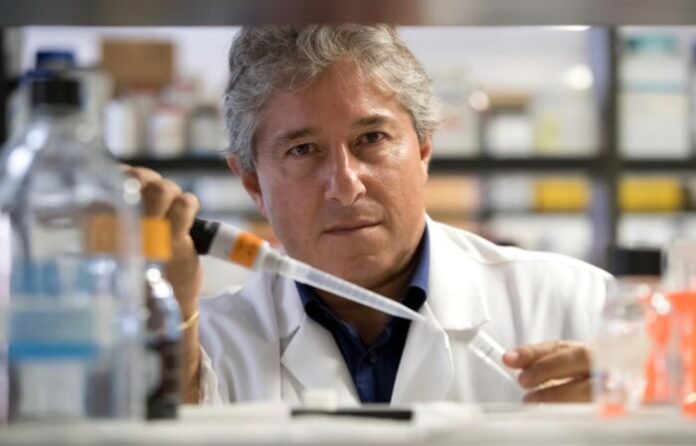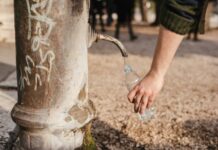
In the last few days we have witnessed panic scenes due to the spread of the coronavirus: escapes from the red zone, supermarkets taken by storm to stock up on masks, disinfectants, food and other consumer goods. Not to mention the damage that COVID-19 is causing to Italy’s economy and productivity. The news coming from the media are conflicting, on the one hand there are those who cause alarmism, on the other those who trivialize by assimilating the coronavirus to a common seasonal influence.
We tried to understand each other a little more and to do so we interviewed Antonio Giordano, director of the Sbarro Institute in Philadelphia and full professor at the Department of Medical Biotechnology of Pathological Anatomy at the University of Siena, who explains to us what COVID-19 is.
“Coronaviruses are capsule RNA viruses that cause respiratory diseases of varying severity from the common cold to fatal pneumonia – says Giordano – Seven are the known coronaviruses that cause disease in humans. Of these, four mostly manifest with common cold symptoms while three cause much more severe respiratory infections: MERS-CoV was identified in 2012 as the cause of Middle Eastern respiratory syndrome, SARS-CoV of acute respiratory syndrome severe (SARS) and, finally, SARS-CoV2 is a new coronavirus identified as the cause of coronavirus disease in 2019 (COVID-19) that started spreading in Wuhan, China and is rapidly spreading throughout the world”.
The latter three coronaviruses cause serious respiratory infections; and as pathogens from infected animals, through the jump of species, they are transmitted to people. Diffusion from person to person occurs through contact with infected secretions: mainly through contact with respiratory droplets.
“A characteristic of this virus is that it is very contagious – he continues – This type of virus can expand without finding resistance, because a vaccine is missing and because being new the population has no antibodies to face it. It is important to underline that, in most cases, mortality is not attributable directly to the coronavirus, but to the presence of previous chronic pathologies aggravated by the coronavirus “.
At the moment there is no vaccine or antiviral drugs or other specific treatments although the whole scientific world is studying COVID-19 to find a cure. “The only way to slow down this epidemic is to reduce the flow of people and avoid any interpersonal contact – suggests the director of the Sbarro Institute – We must strive to respect containment policies, in order to help our doctors and our hospitals to “dilute” the daily growth curve of cases over time. Otherwise, we will risk collapse especially with regard to intensive and subintensive therapy. Each of us can make a difference and must make it. The best thing is to stay where you are, not to flee to areas that seem apparently intact. “
The incubation period represents the period of time that passes between the infection and the development of clinical symptoms. It is currently estimated that it varies between 2 and 11 days, up to a maximum of 14. “We must try to curb alarmism, but be aware of what is going on, and understand that the number of subjects found positive in Italy and in Europe will increase. This is inevitable for two reasons; the first is that we now know that SARS-CoV-2, the virus that causes COVID-19, is very infectious and the mode of contagion occurs when those who already have the infection do not show obvious symptoms. Second, identifying the subjects who have come into contact with those who are already positive will have the inevitable consequence of finding others”.
The cases of contagion and deaths in Italy are in greater numbers than in other areas in Europe. The reasons are different; certainly because Italy, to date, has carried out over 30 thousand control tests on Covid-19, unlike most European countries, then because our country is characterized by an elderly population.
“The professor. Enrico, Bucci of the Sbarro Institute, in Philadelphia, the center I direct – explains Giordano – tried to explain the high mortality. His observation suggests that different sampling strategies on populations at different stages of development of the epidemic (at an advanced stage or if it is discovered at the beginning), therefore, together with the delay with which it aggravates and dies compared to when you become infected , cause extreme variability between different nations in what is apparent lethality on a certain date. At the end of the epidemic, however, in both scenarios considered lethality will converge to its true value (1%)”.
There has been talk of a possible link between coronavirus and climate change but Giordano categorically denies it. “To date, there is no scientific evidence that correlates the spread of COVID-19 and climate change, although it is important to underline the impact that pollution has on human health. In a short time the coronavirus emergency will have passed and we will remember it as one of the many seasonal influences while pollution is a persistent danger, just think that the amount of waste grows year by year. All kinds of substances, new molecules have been introduced into the environment, we are bombarded with radiation and radio frequencies”.
This causes a constant increase in the incidence of tumors. “We focus our attention on a virus that will soon be eradicated by forgetting this scourge that is reaping and will reap many victims in the years to come. For these reasons, I believe that every biomonitoring activity is necessary in order to bring out the close relationship between pollution and cancer and to force society to put man and his home, the environment first”.






































